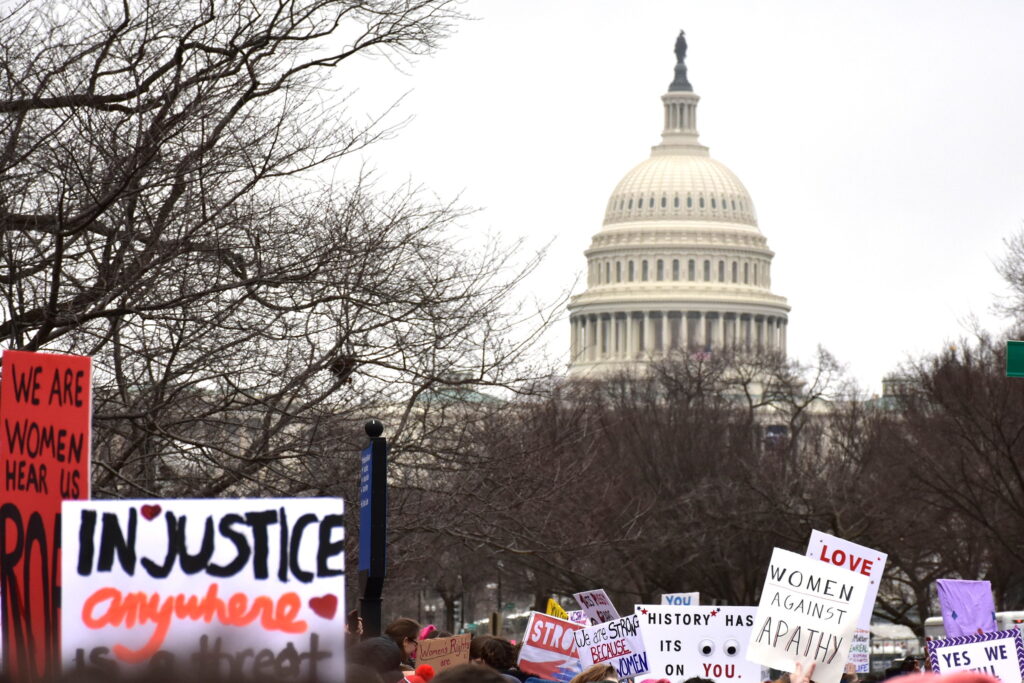The Biden administration has committed to promoting a women’s rights agenda. We should remind President Biden, the new Gender Policy Council, and members of Congress of their domestic and foreign policy commitments to ending female genital mutilation/cutting.

This February 6, the International Day of Zero Tolerance for Female Genital Mutilation, we can reflect on something quite extraordinary that happened at the beginning of the 2021, albeit to little fanfare: The Stop FGM Act of 2020 was signed into law after unanimously being passed by both the U.S. House of Representatives and the Senate.
This is not an entirely new law; the Stop FGM Act amends a federal law against female genital mutilation on the books since 1996. Like many other laws, the 1996 FGM law sat largely dormant: unknown and unused. That is, until a young woman, Jaha Dukureh, looked at what was happening in other parts of the world to end FGM and challenged the U.S. government to do more at home. In 2014, her change.org petition garnered more than 220,000 signatures and started a U.S. movement.
The government responded to the onslaught of advocacy:
- The White House formed an interagency FGM working group; more and more survivors became advocates.
- Former Rep. Joe Crowley (D-N.Y.) and Sen. Harry Reid (D-Nev.) took the leads in Congress, passing the 2011 Girls Protection Act, which closed a loophole that allowed girls to be taken outside the country for purposes of FGM.
- The Centers for Disease Control issued a report that 513,000 girls in the United States had experienced or were at risk of FGM (the first study done since the 1996 law).
- The U.S. Government Accountability Office issued reports on domestic and foreign efforts to address FGM (stating much improvement was needed).
- The government posted fact sheets on its commitment to end FGM/C and protect the health and well-being of, and advance the rights of, women and girls in the U.S. and globally.
We worked to ensure that girls’ and women’s rights were also reflected throughout U.S. foreign policy. Female genital mutilation/cutting was included for the first time in U.S. annual Human Rights Reports and included in the U.S. Strategy to Prevent and Respond to Gender-Based Violence globally.
Responding to civil society activism, bipartisan members of Congress sent a letter to the president in 2015 requesting the U.S. advocate that all countries protect all girls from FGM/C. Ambassador Samantha Power brought that powerful message to the United Nations, and later that year, eliminating female genital mutilation by 2030 became a global target in the Sustainable Development Goals, agreed to by 193 countries, including the U.S. This development was groundbreaking.
In December 2016, the first ever U.S. End Violence Against Girls: Summit on FGM/C was organized. The summit brought together key stakeholders: lawmakers, policy-makers, domestic and foreign, civil society, survivor activists, doctors, religious leaders, educators and donors. This was the culmination of years of intense efforts to raise awareness of female genital mutilation of girls in the U.S. and the need for the U.S. to urgently take action if we are to eliminate FGM/C by 2030.
The summit resulted in recommendations for health care providers, law enforcement and educators, at the federal and state levels; and the U.S. End FGM/C Network was first introduced.
While we have had some forward momentum since the summit, we have also experienced severe setbacks that stalled the movement. FGM/C was hijacked by anti-immigration groups and used to further their agenda and target specific communities; a few human rights groups were forced to actively work against the passage of FGM/C laws in some states, not because they agreed with female genital mutilation/cutting, but because they disagreed with certain discriminatory and targeting tactics that were being used.
In 2017, a federal judge said Congress did not have the authority to pass the 1996 FGM law and dismissed charges against a Michigan doctor accused of cutting over 100 girls. The Department of Justice, bowing to pressure from the Department of State, did not defend Congress’s rightful authority to pass the FGM law under the treaty power but instead announced it would not enforce the law. Girls’ human rights and protection of their bodies were, like so many times before, pushed aside.
Cutting girls’ genitalia for non-medical reasons has no benefits, only harm; female genital mutilation/cutting is about control and denying girls and women their rights to their bodies, their health, their sexuality and their autonomy. FGM/C is yet another form of violence that targets girls, like child marriage, sexual exploitation and sexual violence; we must actively and urgently protect girls from human rights violations.
One of the most effective ways to prevent the rollback of laws that protect girls and women, like what we saw with the 1996 FGM/C law, is to anchor them to the U.S. Constitution via the Equal Rights Amendment. Gender equality is recognized in 168 constitutions around the world, but not in the U.S. Constitution. It is time for all of us to call on our congressional representatives and the administration to recognize gender equality in our Constitution.

We now have the opportunity to press reset. We have clear recommendations in place and can rebuild the momentum from the 2016 Summit. The Stop FGM Act clarifies and strengthens the federal FGM/C law; it requires federal agencies to collect data, educate and assist communities and stakeholders, and report annually to Congress.
The U.S. End FGM/C Network—with over 300 member organizations, experts and power-house survivor advocates, doctors and clinicians—is well placed to engage, guide and inform the federal inter-agency working group on FGM/C, Congress, the judiciary and other key stakeholders to ensure they meet their obligations (and request the necessary budgets to do so).
The members of the U.S. End FGM/C Network will continue to raise public awareness and work within communities and directly with girls; they are prepared to provide the necessary oversight to ensure girls’ rights are at the center of the movement, FGM/C is not hijacked for discriminatory purposes and, yes, hold duty bearers accountable.
The Biden administration has committed to promoting a women’s rights agenda. A little over four years ago in 2016, then Vice President Biden stood before thousands of advocates on the United State of Women Summit stage and committed to ending violence against girls and women, including FGM/C. We should remind President Biden, Ambassador Power, incoming Director of the U.S. Office of International Development, the new Gender Policy Council, and members of Congress of their domestic and foreign policy commitments to ending female genital mutilation/cutting and actively work to help them achieve it.
The mere existence of laws alone will not end FGM/C, but the law can be a powerful tool for prevention and an accelerator for social change, primarily when used to raise awareness and educate. It can and will also be used to prosecute those who do not protect girls. The Department of Justice recently indicted an individual for taking a girl outside the country for purposes of FGM/C—the first case brought under the 2013 law.
The most strategic foci of the federal and state FGM/C laws may be to ensure that:
- Girls know their rights;
- Girls are empowered and have platforms to demand and claim their rights;
- State and federal agencies, including the Departments of Health and Human Services, Education, and Justice, are informed and trained to include FGM/C prevention and treatment within existing programs;
- Parents, doctors, social workers, teachers, communities and others are aware of the harms and long-term impact of FGM/C, and their role and responsibility in preventing it, with a clear understanding that breaking the law has consequences.
We must work to ensure that all girls, without exception, are protected from violence—including FGM/C—and remain vigilant in safeguarding this movement from being hijacked or used in a discriminatory manner.
Laws don’t implement themselves. Congress did their job and amended the law. On Zero Tolerance Day, let’s recommit to ensuring that all girls are protected from female genital mutilation/cutting; that FGM/C laws are effectively implemented for prevention, partnership, education, and, when necessary, prosecution; and that civil society does our part by holding those in positions of power accountable to girls and women.
You may also like:





